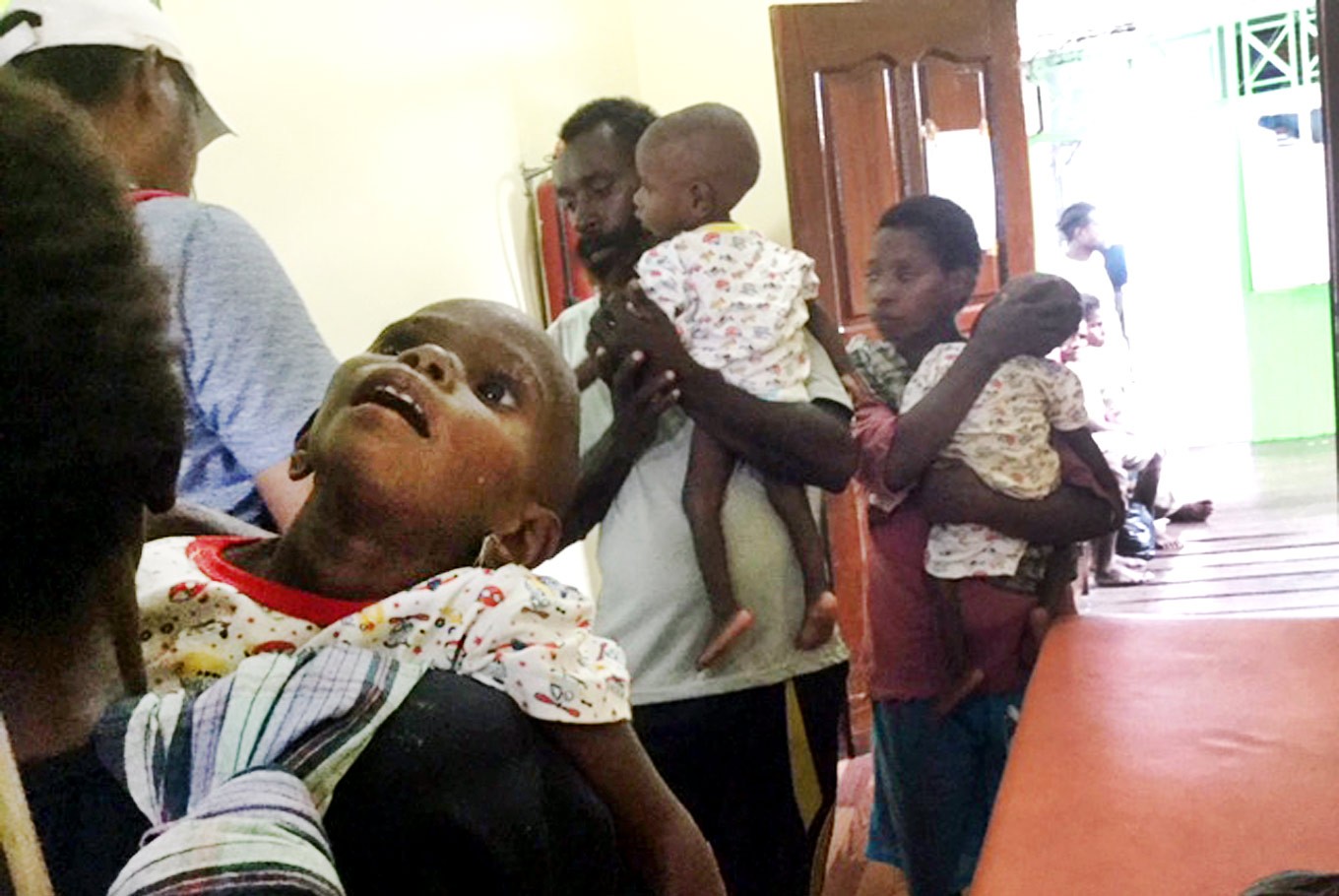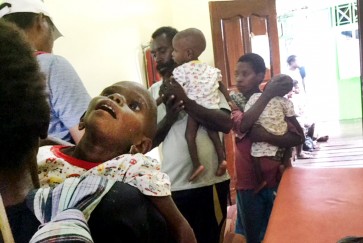Popular Reads
Top Results
Can't find what you're looking for?
View all search resultsPopular Reads
Top Results
Can't find what you're looking for?
View all search resultsDeath in paradise: Stop business as usual in Papua
A “business as usual” approach to such problems would see local governments crying for emergency funds from Jakarta every time news breaks out that locals are dying and being evacuated to hospitals.
Change text size
Gift Premium Articles
to Anyone
 Malnourished siblings Epi (left), Arfat (center) and Poma from Sarwamok in Agats district, Asmat regency, Papua, are being transferred to Agats General Hospital on Jan. 18. The children were found by paramedics who were deployed in response to a recent measles outbreak. The journey from Asmat’s capital to Agats regency takes several hours by boat. (JP/Nethy Dharma Somba)
Malnourished siblings Epi (left), Arfat (center) and Poma from Sarwamok in Agats district, Asmat regency, Papua, are being transferred to Agats General Hospital on Jan. 18. The children were found by paramedics who were deployed in response to a recent measles outbreak. The journey from Asmat’s capital to Agats regency takes several hours by boat. (JP/Nethy Dharma Somba)
T
he recent news about the malnutrition and measles outbreak that caused the deaths of over 65 children in Asmat, Papua, stood in stark irony with news about Indonesia’s rice self-sufficiency. It showed how Papuan infants begin their journey into life on a treacherous and life-threatening path.
The national and local governments stated they had been aware of the calamity since September 2017, yet it took four months to realize the effects of mounting fatalities. Despite the instant response, in a few months’ time, after the emergency status is downgraded, it’s going to become business as usual again.
Between May and August 2017, 38 Yahukimo residents died due to illnesses such as diarrhea or coughing. In 2013, 61 locals died in the regency near Asmat, and another 113 in 2009 because of similar reasons, apart from a reportedly failed harvest. Why do people die so easily from such preventable diseases in 21st century Indonesia?
The latest statistics show that nationwide coverage of measles immunization of children under five barely reached 71 percent in 2016, even lower than during the 1998 monetary crisis. The proportion once peaked in 2014 to 80.06 percent, but since then continued to decline to 70.67 percent in 2017.
According to the World Health Organization, nationwide immunity can only be reached when immunization coverage reaches 95 percent — yet Indonesia is moving backward. Last year, WHO data showed regencies with 95 percent measles vaccination declined from 45 percent in 2013 to 35 percent in 2015. Asmat regency itself only managed 17.3 percent immunization coverage for measles between January to July 2017. Was the outbreak really a surprise?
Malnutrition is no news either. One third of Indonesian children under five years old are stunted, a syndrome of malnourishment during their developmental stages. Infectious diseases like measles are more harmful for the malnourished. Health Ministry data last year showed the proportion of malnutrition and undernourished of children under five were 3.4 and 14.4 percent, respectively, nationwide. Provinces like East Nusa Tenggara, West Kalimantan and Maluku have more than double the national proportion of malnourished children. About a fifth of children in these provinces, in addition to Central Kalimantan and West Papua, are undernourished. While official data might be much lower because of underreporting, the proportion of malnutrition and undernourished children in Papua is slightly better than the national level, i.e. at 3.2 percent and 11.9 percent respectively. However, the death toll has always been higher.
The health outcome is resultant of many different aspects. As Asmat regency lies on coastal lowland and swampy rainforest, airborne and waterborne diseases spread more rapidly compared to other areas. Some locals still live a seminomadic life, fishing and gathering sago in the forest, a lifestyle that has barely changed since the introduction of the “modern” way of life by outsiders in the 1950s.

















